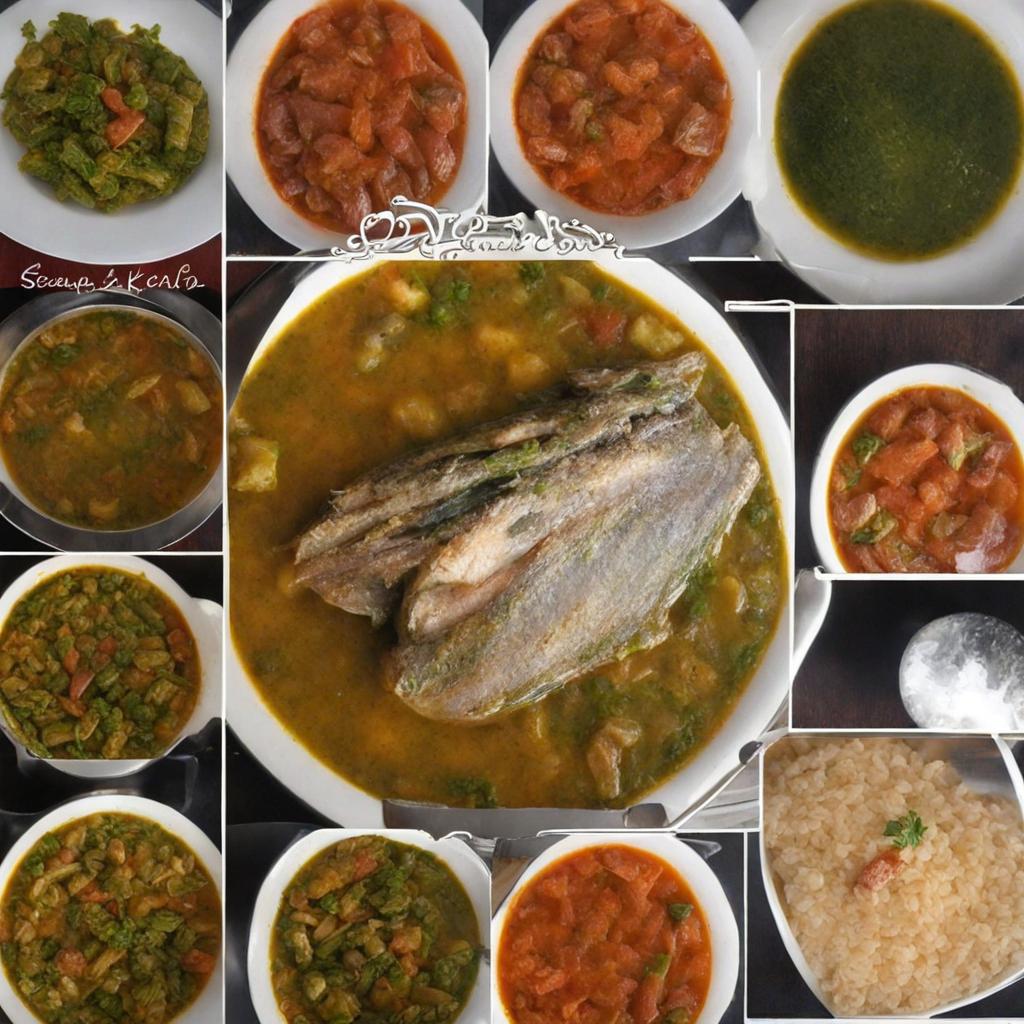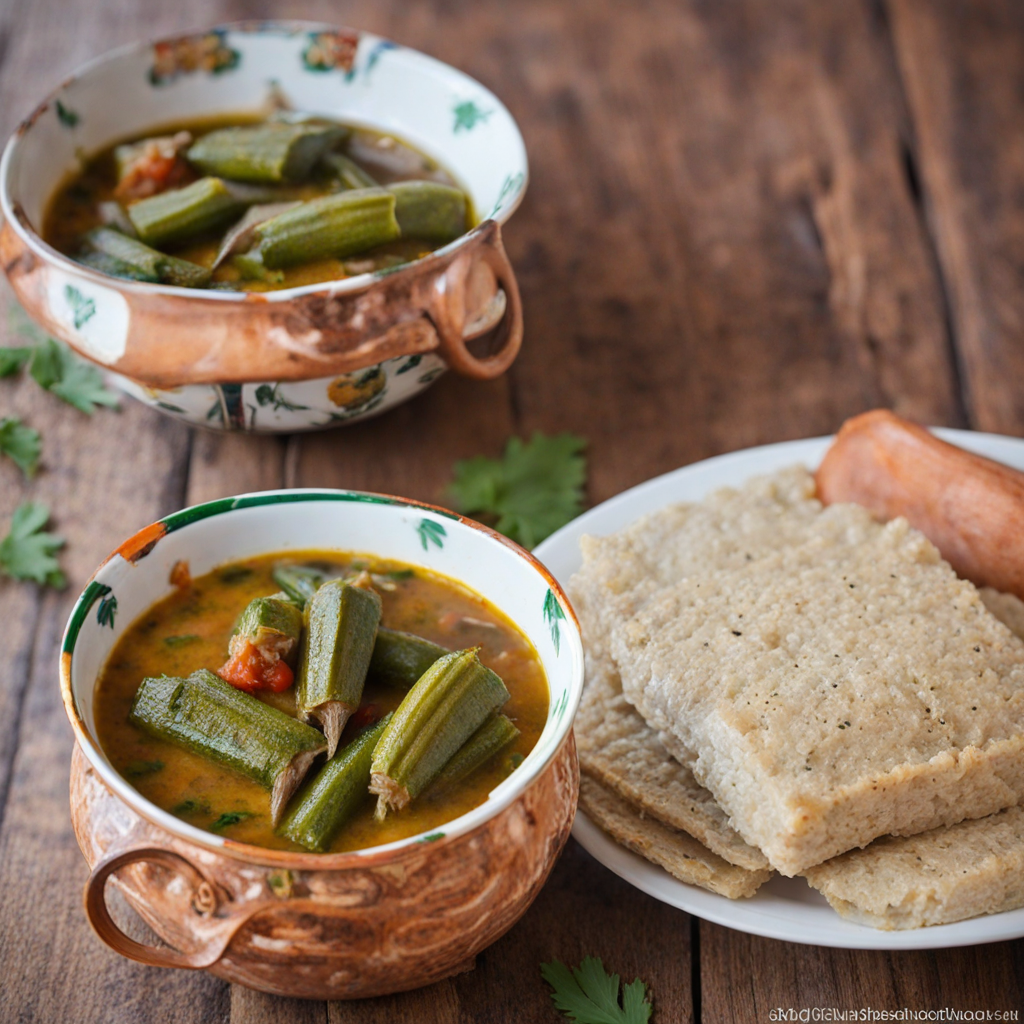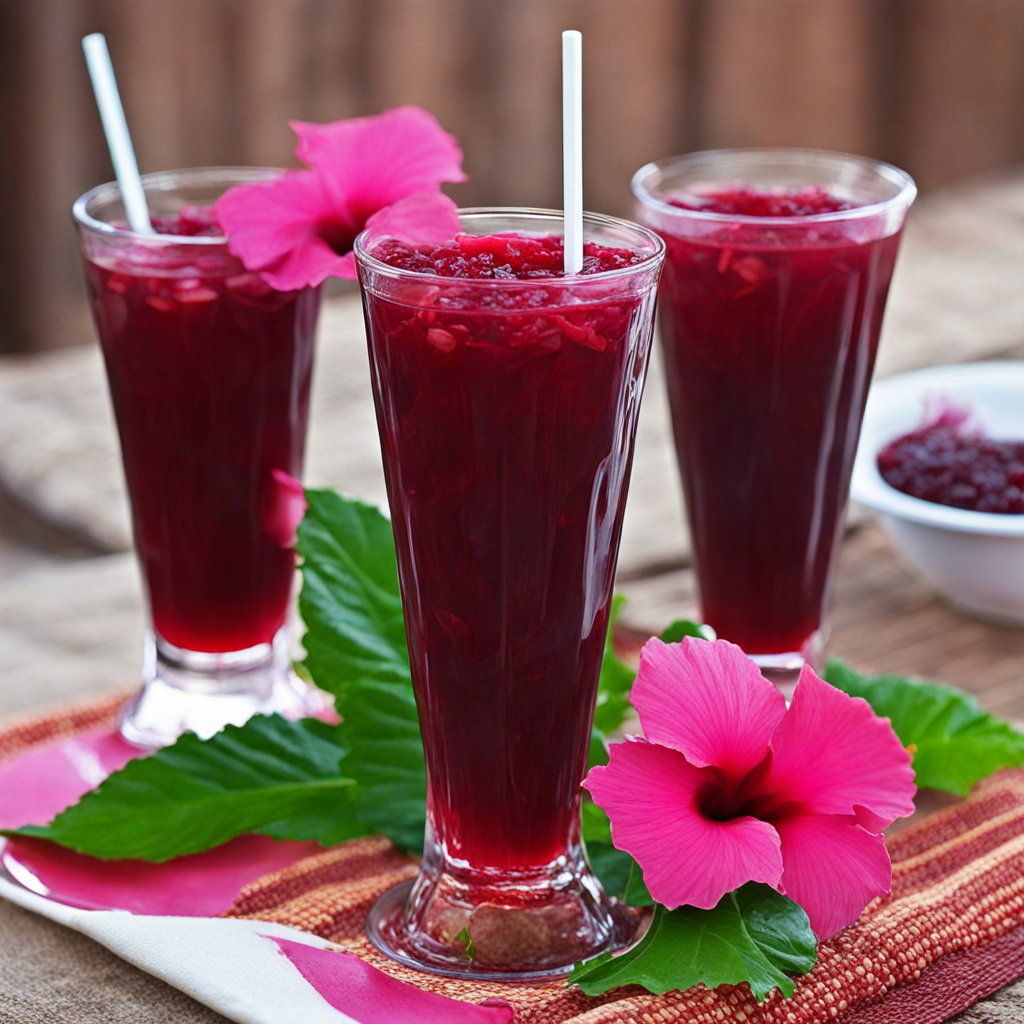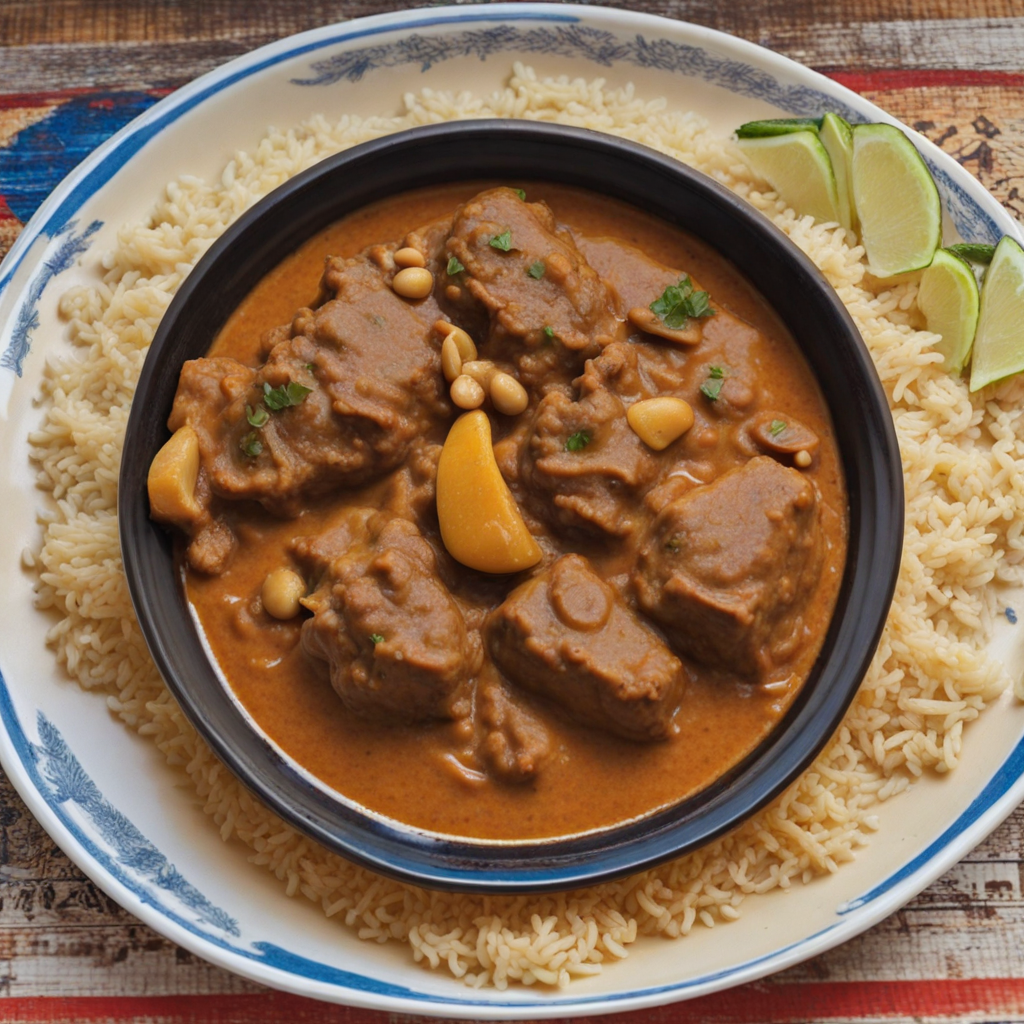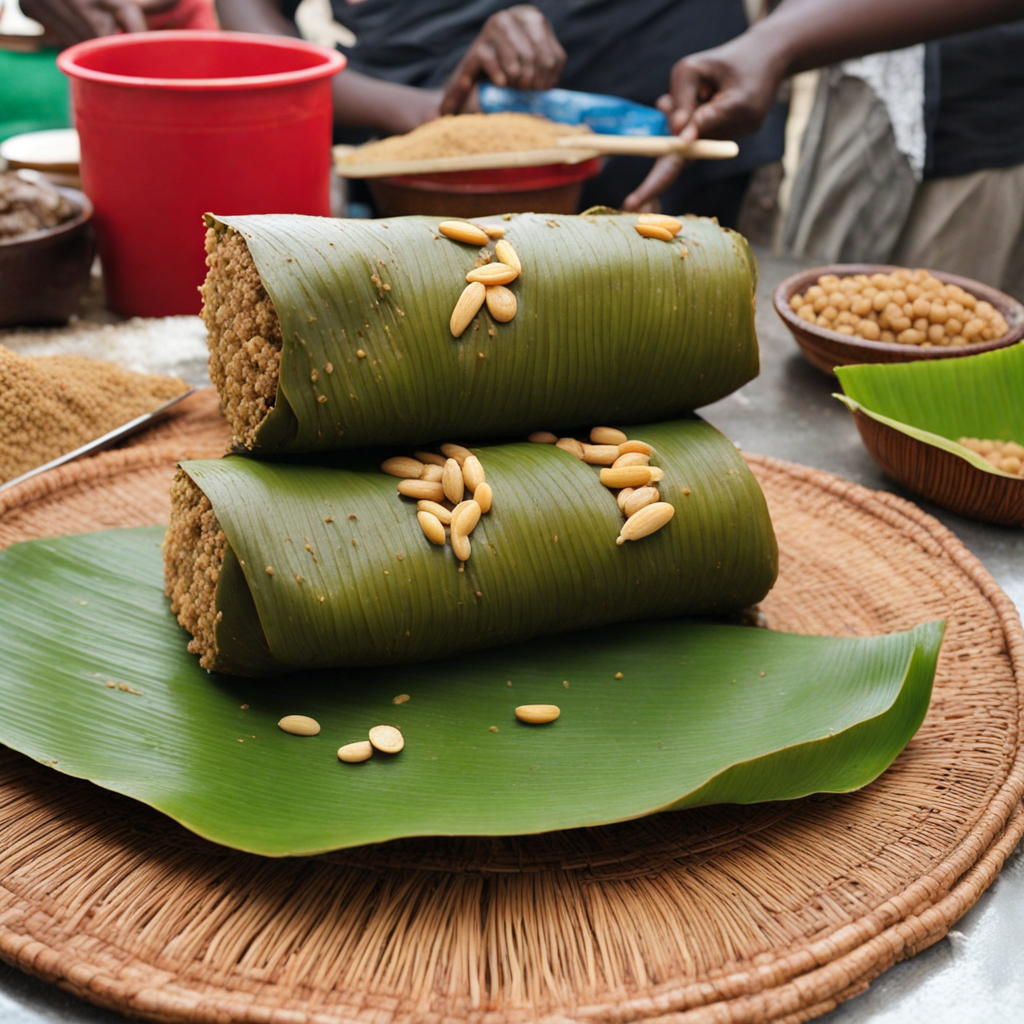Supu Kanja
Supu Kanja is a delightful Senegalese dish that showcases the rich culinary heritage of West Africa. This hearty soup is primarily made from jute leaves, known locally as "kankankan," which give the dish its unique texture and flavor. The leaves are simmered to create a thick, flavorful broth, often enriched with a variety of ingredients such as fish, meat, or even vegetables, depending on regional variations. The combination of spices, including ginger, garlic, and chili, adds depth and warmth, making each spoonful a comforting experience that warms the soul.
How It Became This Dish
The History of Supu Kanja: A Culinary Treasure of Senegal #### Origins of Supu Kanja Supu Kanja, also known as "Kanja soup," is a traditional dish from Senegal, deeply rooted in the country’s rich culinary heritage. Its name derives from the Wolof word “kanja,” which refers to the jute leaves (Corchorus olitorius) used as a primary ingredient. This leafy green is not only cherished for its unique flavor and nutritional value but is also a staple in various West African cuisines. The origins of Supu Kanja can be traced back to the indigenous practices of harvesting local vegetation and the influence of various cultures that have shaped Senegal over centuries. The jute plant, originally cultivated in Southeast Asia, made its way to Africa through trade routes. Its adaptability to the local climate allowed it to thrive in Senegal, where it became an integral part of the culinary landscape. Historically, the dish embodies the interplay of various cultural influences, including those of the Wolof, Serer, and Mandinka peoples. Each ethnic group contributed its own techniques and flavors, enriching the complexity of Supu Kanja. The dish showcases the use of ingredients that are locally sourced, emphasizing a sustainable agricultural practice that has been passed down through generations. #### Cultural Significance Supu Kanja holds a prominent place in Senegalese culture as a symbol of community and tradition. Traditionally prepared during family gatherings, celebrations, and religious festivities, it is often shared among family and friends, reinforcing social bonds. The dish reflects the communal spirit of Senegalese society, adhering to the adage that “food is a means of bringing people together.” In Senegal, food is more than mere sustenance; it is a form of expression and an integral part of identity. Supu Kanja is often consumed with rice or served alongside fish, particularly the country’s iconic grilled fish dishes. The combination of flavors and textures creates a harmonious meal that showcases the region’s culinary diversity. Furthermore, the dish is steeped in ritual and tradition. For instance, the preparation of Supu Kanja often involves the collective effort of women in the community, highlighting their vital role in preserving culinary traditions. These gatherings serve as a platform for sharing stories, wisdom, and cultural practices, ensuring that the heritage associated with food remains alive. #### Ingredients and Preparation The primary ingredient, jute leaves, is known for its mucilaginous texture, which gives Supu Kanja its distinctive consistency. The leaves are rich in vitamins A, C, and K, as well as minerals like calcium and iron, making the soup not only delicious but also highly nutritious. Other common ingredients include fish (typically smoked or dried), onions, tomatoes, and various spices, including chili peppers and black pepper. The preparation of Supu Kanja varies by region and family, but the basic method typically involves cooking the jute leaves in a broth made from fish or meat, along with onions and tomatoes. The soup is then seasoned with spices, allowing the flavors to meld together. The final dish is often garnished with additional herbs or spices, enhancing its aromatic profile. In contemporary Senegal, variations of Supu Kanja have emerged, incorporating modern cooking techniques and ingredients. Some chefs experiment with different proteins, such as chicken or beef, while others explore fusion styles that blend traditional Senegalese flavors with international influences. This evolution reflects the dynamic nature of Senegalese cuisine and its ability to adapt while maintaining its core identity. #### Development Over Time The development of Supu Kanja over the years is a testament to the broader changes in Senegalese society and cuisine. In the past, the dish was primarily prepared using traditional methods and local ingredients, with families relying on seasonal harvests. As urbanization and globalization have taken hold, the accessibility of diverse ingredients has led to new interpretations of the dish. With the advent of modern culinary practices and the influence of international cuisine, Supu Kanja has seen a resurgence in popularity, not only in Senegal but across the world. Chefs and food enthusiasts are now highlighting its health benefits and unique flavors, introducing it to a global audience. This growing recognition has fostered a renewed interest in Senegalese cuisine, encouraging chefs to explore traditional dishes like Supu Kanja while also embracing innovation. The rise of the food tourism industry in Senegal has also contributed to the dish's popularity. Tourists seeking authentic experiences are increasingly drawn to local markets and street food vendors where Supu Kanja is served. Cultural festivals and culinary schools have begun to celebrate and teach the art of making Supu Kanja, ensuring that future generations appreciate and preserve this culinary gem. Moreover, the dish is often featured in cookbooks and food blogs, furthering its reach and inviting people from diverse backgrounds to explore its flavors. Social media platforms have become an important outlet for sharing recipes and stories related to Supu Kanja, creating a vibrant online community that champions Senegalese culinary traditions. #### Conclusion Supu Kanja is more than just a dish; it is a reflection of Senegal’s rich cultural tapestry, interwoven with history, community, and tradition. Its origins, rooted in the indigenous practices and the diverse influences that have shaped Senegalese cuisine, speak to the resilience and adaptability of the country's culinary heritage. As Supu Kanja continues to evolve, it bridges the past and the present, inviting both locals and newcomers to partake in its rich flavors and cultural significance. Whether enjoyed in a family home or a bustling restaurant, Supu Kanja remains a beloved dish, symbolizing the essence of Senegalese hospitality and the enduring power of food to bring people together. Through its journey, Supu Kanja serves as a delicious reminder of the importance of preserving culinary traditions while embracing the future.
You may like
Discover local flavors from Senegal


